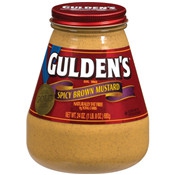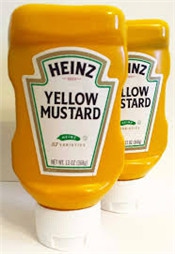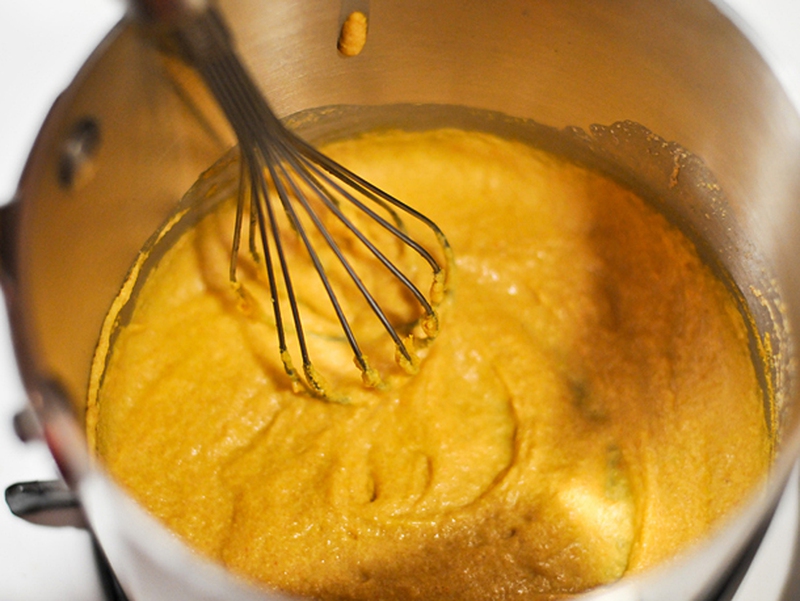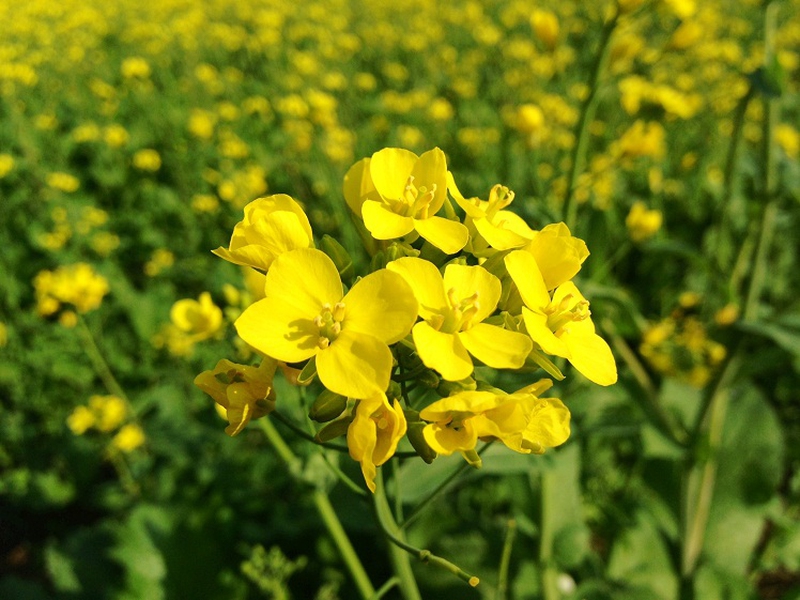Small seeds of the plant mustard are grinded and then added to liquids such as wine, vinegar and water along with seasonings such as horse radish, salt and turmeric to produce prepared mustard. The color of prepared mustard ranges between bright yellow and yellow-brown, and the flavor is sharp and peppery. In any recipe, prepared mustard implies any type of already-prepared mustard as dry mustard. In most of the recipes, 1 tablespoon of prepared mustard can be used to replace 1 teaspoon of dried mustard. However, if the recipe refers to the amount of prepared mustard as ¼ cup or more, you should choose one based on the amount of the dish and other ingredients.

Types of Mustard
Yellow prepared mustard
This type of mustard has the mildest flavor and is the most common of all varieties. It is also referred to as table mustard or regular mustard. It is made of white or yellow mustard seeds.
Di jon prepared mustard
This type of mustard is made with Oriental or brown mustard seeds by adding them to white wine.
Chinese style prepared mustard
This is very strong flavored mustard that is made of ground mustard and water.
Fruit mustards
Since the 14th century, the combination of fruits and mustard is famous. They were favorites of the Dukes of Milan and made by large pieces of fruits with sweet and hot mustard syrup. The various traditional recipes of fruit mustard include apple mustard (which is very hot and famous in Mantua), quince mustard (mild form of fruit mustard that appears like a jam) and cherry mustard.
Honey mustards
Honey mustard refers to a combination of honey and mustard, usually in the ratio of 1:1. It is commonly used on sandwiches and also as a dip for foods, including chicken strips. A salad dressing can be prepared by using honey mustard and vinegar or olive oil. English mustard combined with honey has been used in British cuisine to coat pork chops or grilled lamb cutlets.
Beer mustards
Beer mustard is originated in the United States Midwest in the 20th century. It uses beer in place of vinegar and remains a popular condiment locally.
Popular Brands of Prepared Mustard
Plochman's
This is produced by Plochman’s Inc. The ingredients are present in this mustard including water, mustard seed, white distilled vinegar, turmeric, salt, spices, onion powder and natural flavorings. It is available in most of the grocery stores in the USA.
French's
This is the most popular brand of mustard in the USA. It contains the ingredients like vinegar, water, mustard seeds and turmeric. It is sunny yellow in color due to the presence of turmeric.
Gulden's
It is the third largest brand of mustard in the USA, produced by ConAgra Foods. And it is made with vinegar, mustard seeds, spices, turmeric and salt.
Heinz
It is available in most of the local grocery stores. It contains the ingredients like water, white distilled vinegar, salt, mustard seed, turmeric, mustard bran, paprika and other spices.
Homemade Mustard
Ingredients
Ingredient | Amount |
Mustard seeds | 6 tbsp. |
Mustard powder | ½ cup |
Cider vinegar | 3 tbsp. |
White wine or water | ½ cup |
Salt | 2 tsp. |
Optional Ingredients | |
Honey | 2 tbsp. |
Fresh horseradish, grated | 2 tbsp. |
Fresh herbs, minced | ¼ cup |
Directions
Take a coffee grinder and grind the seeds of mustard for a couple of seconds.
Put the seeds into a mixing bowl and add mustard powder and salt. Add one of the optional ingredients.
Add the vinegar and water or wine and mix well. Put the mixture into a glass jar and keep in a refrigerator. You will have to keep the mixture for around 12 hours before using it.
History of Mustard
Initially, the use of mustard was limited as a medicine and not a condiment. Mustard was applied to skin ailments such as stings of scorpion and pain in tooth by the ancient Greeks. The first prepared mustard was produced by the Romans by adding ground seeds of mustard to wine. The Romans took the seeds to Gaul or modern France, and then making mustard was acquired by the French monks as their favorite and lucrative pastime. It was during the Middle Ages that the prepared mustard spread throughout the France and the rest of the European countries.
- Mustard aids in digestion and also increases metabolism.
- Mustard seeds are rich source of omega-3 fatty acids, along with dietary fiber, calcium, manganese, iron, magnesium, niacin, protein, phosphorus, zinc and selenium.
- Mustard has a pungent and tangy taste, which can be used to replace the condiments like fat butters, mayonnaise and ketchups.
- Mustard has antifungal, antibacterial, antiseptic and anti-inflammatory properties.










View All Comments /Add Comment